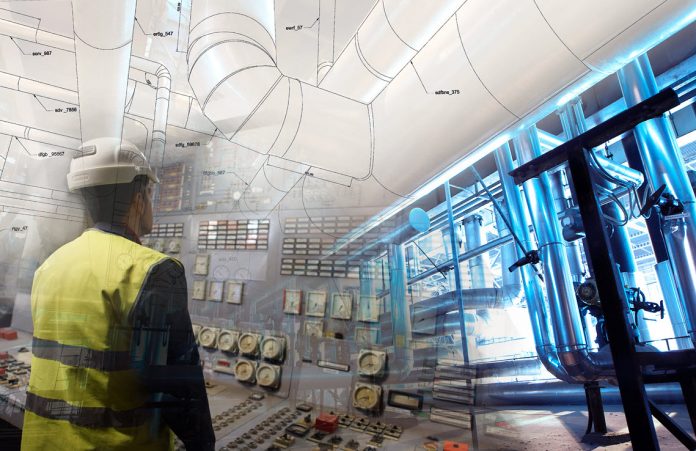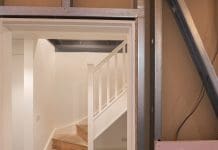With an ever-rising pressure to evolve beyond BIM, sticking with the status quo is not an option for MEP contractors
There’s no arguing the fact that the introduction of BIM and the data-rich 3D models that are synonymous with it has revolutionised construction. By creating a hyper-detailed 3D digital representation of a structure, construction pros at every stage of a project were able to visualise completed projects, coordinate scheduling, fabrication and generally get to more efficient project completion.
But nothing in construction remains stagnant, the features of BIM software and skills of BIM practitioners have advanced dramatically since it first appeared. So, it’s not surprising to discover that the optimal constructible workflow has also evolved to keep pace with what’s now possible.
For MEP contractors, this issue has become particularly pressing because the need for evolution exerts pressure from all sides, but relatively thin profit margins and heavy competition for subcontracting agreements makes an investment in new technology appear daunting. Many MEP contractors simply aren’t sure how to approach a risk/reward assessment of the situation, so the safest choice seems to be sticking to the status quo. But, that’s a dangerous strategy to follow.
Let us introduce you to what’s now available to take your project workflows well beyond BIM: The Constructible Process.
The Constructible Process
The Constructible Process helps MEP contractors to move beyond standard BIM and truly unify their workflow while coordinating effectively with all other project stages.
The core of The Trimble Constructible Process is The Three Cs:
- All phases and trades are Connected.
- Models and workflows are Content-Enabled.
- Constructible models drive smarter workflows.
This isn’t just a collection of buzzwords; it’s a proven process by which construction professionals at every phase of a project can enhance profitability, boost their own standards for quality, speed and efficiency, and work collaboratively to improve the end product for all stakeholders. The Constructible Process is a powerful tool for MEP contractors.
Five reasons why BIM alone is simply no longer enough for MEP contractors
- BIM alone doesn’t guarantee designs are constructible
When architects and structural engineers produce 3D models to communicate their designs, they’re not yet constructible models. But they do provide the foundation for what will eventually become constructible models, and they save the time and effort it would take for structural engineers and MEP detailers to convert their designs into models that can be used from that point on.
The amount of information delivered by 3D models is variable. The industry term for this is called level of development (LOD). This measurement denotes the degree to which a model component reliably informs a user about geometry and other information. LOD tiers are aligned with industry standards and describe the types of information models from 200 – 500 being the highest possible LOD, as it’s field verified to be “as-built” – a digital twin to the physical component.
If the architect and structural engineer have provided a 3D model with components at an adequate LOD, MEP estimates and job submittals can be completed more quickly and efficiently using software solutions.
- BIM alone doesn’t coordinate the detailing
MEP detailers are responsible for zooming into the initial design or model and determining how to apply practical engineering and construction knowledge and experience in designing the structure’s mechanical, electrical and plumbing systems. However, BIM on its own does not offer the cross-departmental collaboration most projects need to overcome timeline and financial obstacles.
Impacting both fabrication and installation, the use of collaborative, constructible 3D models throughout this stage allows for proactive clash detection, reduction of bottlenecks and faster collaboration with the architect, structural engineers and even the owner. Taking advantage of these opportunities, the MEP detailer can save a tremendous amount of time and money on both ends of the project and help produce a better product overall.
- BIM alone does not optimize the fabrication process
For all its utility in the design phase, the usefulness of BIM falls off as your project enters fabrication. Like any construction phase, MEP fabricators require project information specific to their day-to-day tasks and standard BIM simply does not have this capability. The answer: content-enabled models.
By-passing a content-enabled, constructible model to the fabrication shop, detailers and project managers offer shop managers all the benefits of that data, including greater confidence in the measurements and instructions provided. With the right solutions installed, data from the 3D models can be seamlessly integrated with cutting machine automation platforms, enhancing the fabrication process even more.
- BIM alone doesn’t ensure fast and efficient installation
By default, BIM lacks any in-depth information about real-world installation. Subcontractors in the field are not particularly concerned with design files – they need actionable details on how parts are to be fitted or how components interact.
The installation phase is improved in much the same way as fabrication using constructible models. By taking advantage of the right technology, every subcontractor, foreman and manager on the jobsite has access to the same information. Collaboration can happen in real-time as needed, streamlining budgets and schedules. As a result, every aspect of the complex building process becomes more efficient and profitable.
- BIM alone doesn’t facilitate long-term structural maintenance
All too often, BIM becomes an obsolete asset after completion of a project. All of this important building information goes to waste once the structure is operational. In most projects, it isn’t made clear just how valuable content-enabled models can be for ongoing maintenance initiatives.
Even after the project is completed, The Constructible Process offers benefits for owners and facility managers who can use the as-built constructible models as robust reference material to inform ongoing maintenance requirements, energy and space optimisation, and future remodel or upgrade projects. The ability to pass along as-built constructible models to a new owner could even increase the resale value of the property.
Explore The Constructible Process further by downloading your free copy of The MEP Contractor’s Guide to Constructibility.
Tel: +44 1908 608833
Twitter: TrimbleMEP
Please note: this is a commercial profile.














